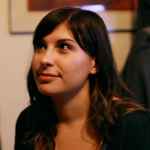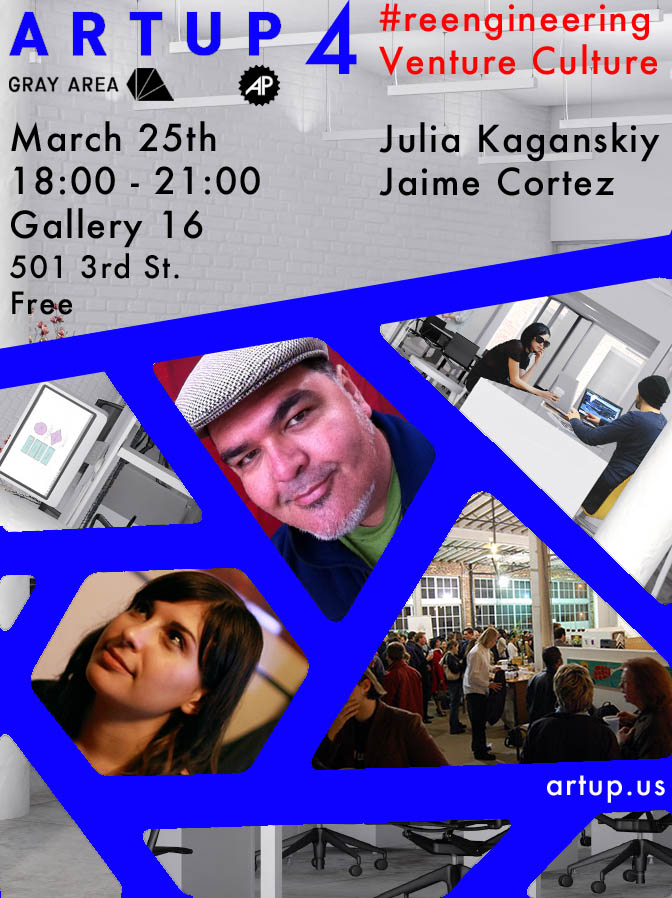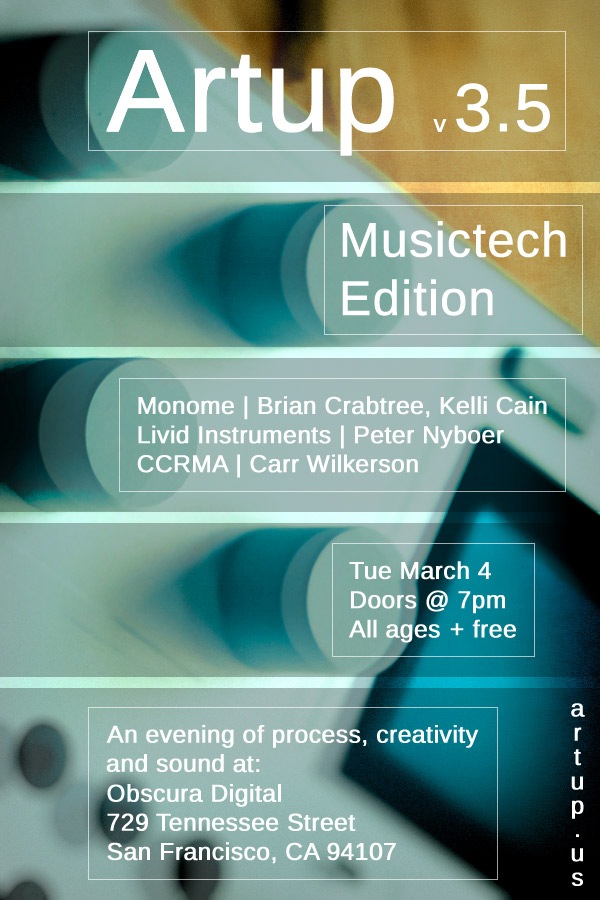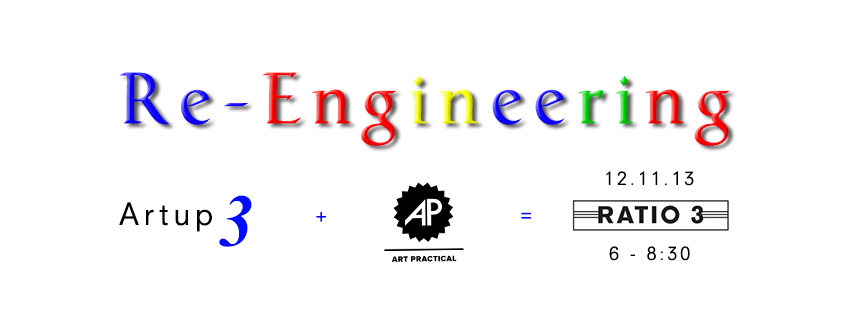We are pleased to announce a very special Artup 4, focused on a discussion of the emerging trend of cultural incubators as a model of art support and production. Taking inspiration from tech startup incubators and co-working spaces, cultural incubators blur the lines between culture and commerce, providing a platform for interdisciplinary work spanning art, design, technology innovation, and entrepreneurship. How can we create spaces that support new modes of interdisciplinary cultural production using art and technology, and how do their models interact with existing platforms for the arts?
This conversation builds on the lively ongoing discussion developing in the Re-Engineering Facebook group and the Op-Ed series on Art Practical. Re-Engineering is a public forum for solutions, working towards a sustainable cultural ecosystem in the Bay Area, where art and tech can find common ground and flourish. Any attempt to address the relationship of money and art is fraught with strong opinions, and we have invited two insightful speakers to present perspectives and lead an open discussion with the audience on the topic.
 Julia Kaganskiy (@juliaxgulia) is the Director of NEW INC, the newly announced cultural incubator led by the New Museum. Previously she was global editor of The Creators Project, and is also the founder of New York Times–acclaimed #ArtsTech meetup, a monthly event series exploring the intersection of art and technology. In 2011, Julia was named one of Fast Company‘s Most Influential Women in Technology and a finalist for the World Technology Network award in the Arts.
Julia Kaganskiy (@juliaxgulia) is the Director of NEW INC, the newly announced cultural incubator led by the New Museum. Previously she was global editor of The Creators Project, and is also the founder of New York Times–acclaimed #ArtsTech meetup, a monthly event series exploring the intersection of art and technology. In 2011, Julia was named one of Fast Company‘s Most Influential Women in Technology and a finalist for the World Technology Network award in the Arts.
 Jaime Cortez is a writer, visual artist, and longtime student of comic books. His art has been exhibited across the Bay Area at venues that include the Berkeley Art Museum, Oakland Museum of California, Intersection for the Arts, Yerba Buena Center for the Arts, and Galería de la Raza. His short stories, often focused on humor, sexuality, and the perspectives of those on the sociocultural margins, have been published in over a dozen anthologies.
Jaime Cortez is a writer, visual artist, and longtime student of comic books. His art has been exhibited across the Bay Area at venues that include the Berkeley Art Museum, Oakland Museum of California, Intersection for the Arts, Yerba Buena Center for the Arts, and Galería de la Raza. His short stories, often focused on humor, sexuality, and the perspectives of those on the sociocultural margins, have been published in over a dozen anthologies.
We are extremely grateful to have the support of Gallery 16 as hosts of this event.
When: Doors 6pm, Discussion 7pm. Tuesday, March 25th, 2014.
Where: Gallery 16, 501 3rd St. San Francisco.
$$$: Free
Social Tag: #reenginnering
Artup is a platform for discussion and tangible engagement focused on issues of cultural economics, modes of production, and the confluence of technology and art. It was founded in 2013 by Mat Dryhurst (@matdryhurst) and Barry Threw (@barrythrew). In addition to its meetups, it issues a periodic grant towards projects addressing or using art and technology, funded by the Artup Trustees. Artup is fiscally sponsored by the Gray Area Foundation for the Arts (@gaffta). Artup operates in a generous partnership with Art Practical (@artpractical). Special thanks to Particia Maloney and Marcella Faustini for their invaluable help in co-organizing this event.






